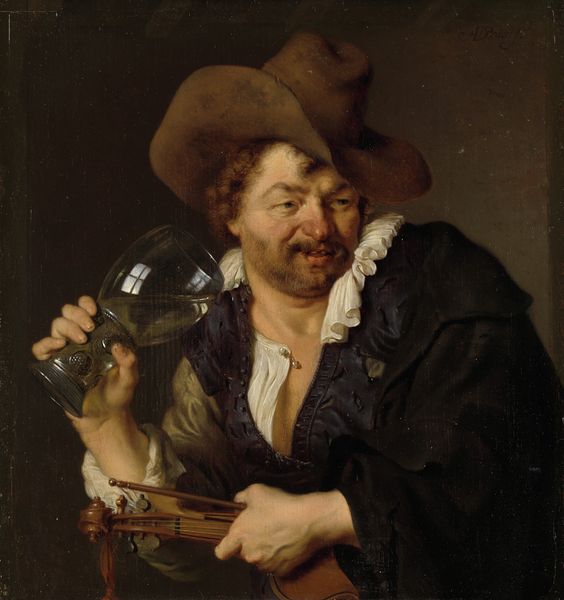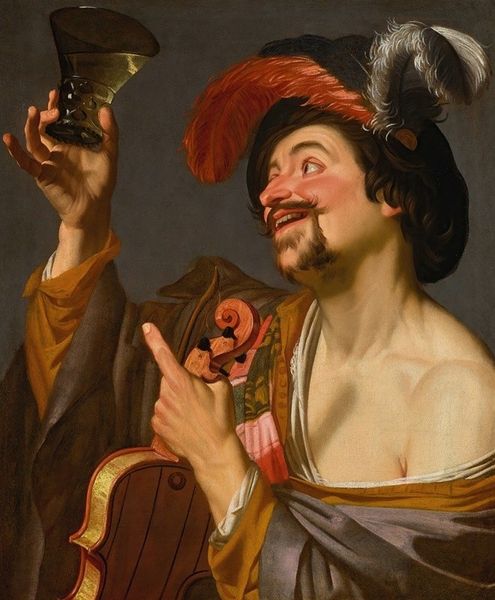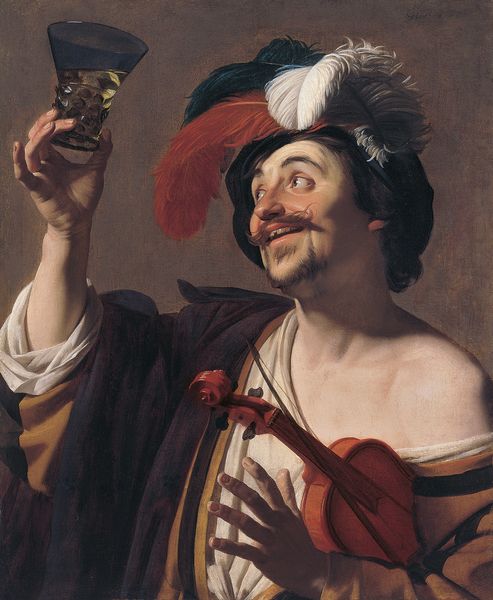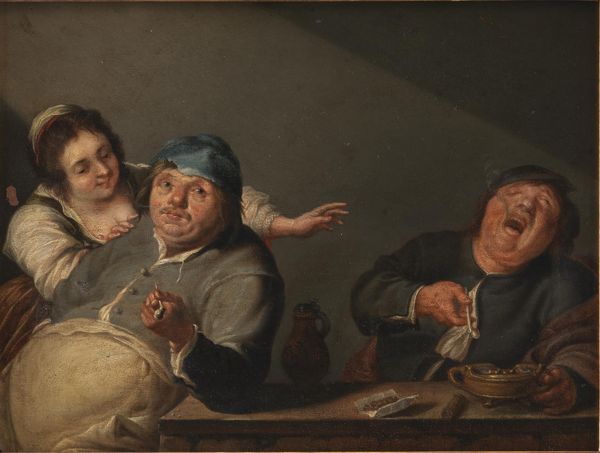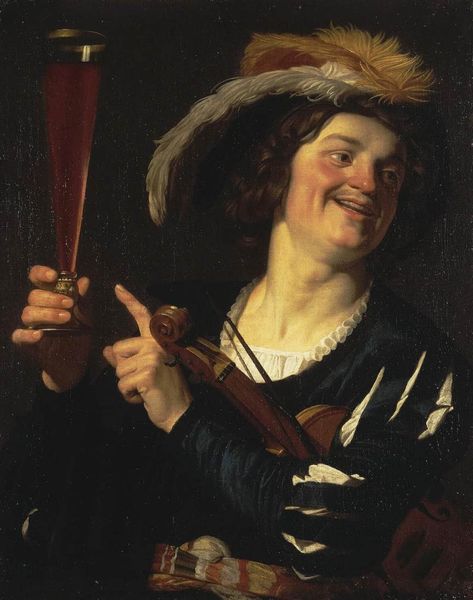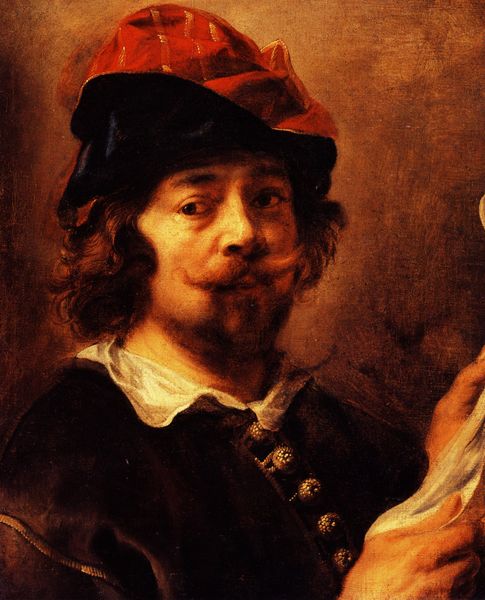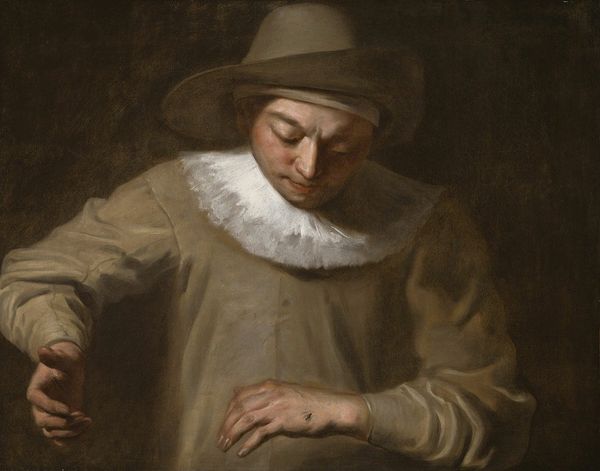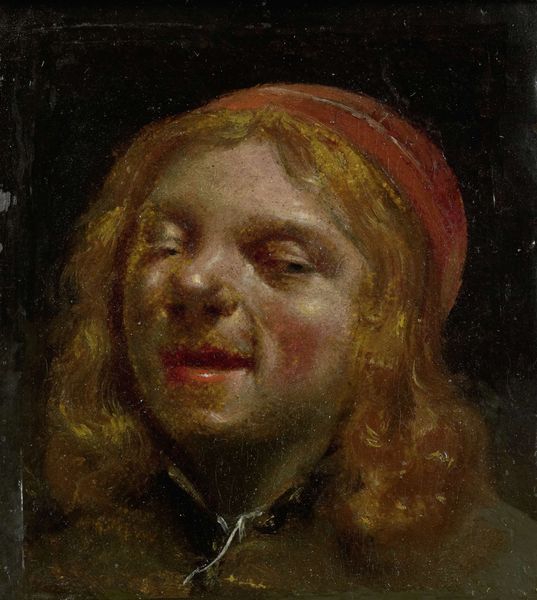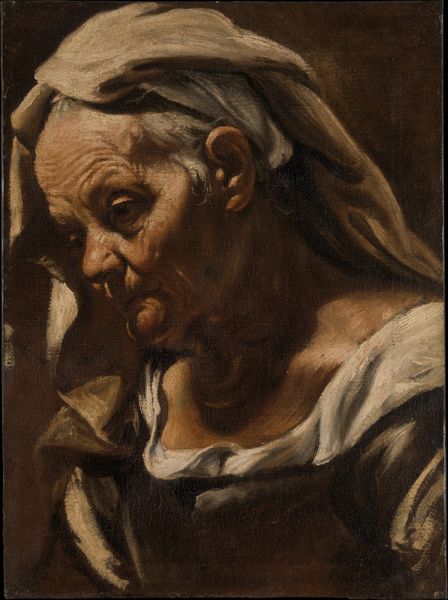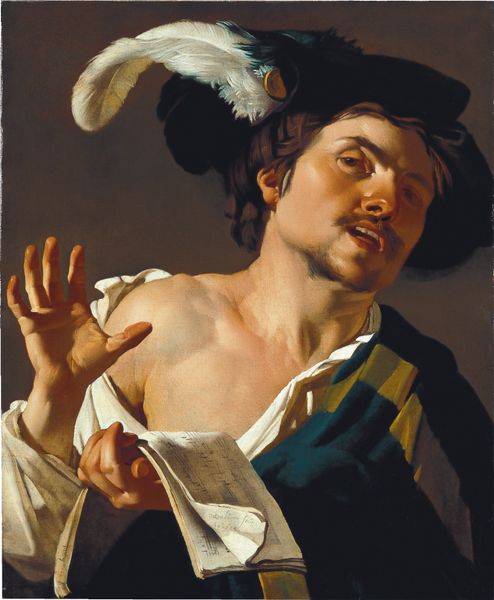
oil-paint
#
portrait
#
baroque
#
oil-paint
#
genre-painting
Dimensions: 59.5 x 68.8 cm
Copyright: Public domain
Curator: Johannes Moreelse painted this expressive character study, Democritus, around 1630, rendered in oil on canvas. Editor: Wow, that laugh is… arresting. It completely dominates the composition. There’s a raw, almost manic energy radiating from this figure. Curator: Notice how Moreelse manipulates light and shadow. The raking light emphasizes the planes of the face, the deep wrinkles around the eyes and mouth. The dark background allows the figure to step forward out of the canvas into our space. The chiaroscuro technique adds dramatic intensity, in keeping with the Baroque style. Editor: And what about the socio-historical context? The uninhibited laughter – is it truly joyful, or is there something darker at play here? There's an undercurrent of social commentary; the laughter becomes a powerful form of critique against social norms and pretensions. Who, exactly, is the painter inviting us to laugh at? Curator: Democritus, an ancient Greek philosopher, was known as the "laughing philosopher." This motif served as a subject for a range of Dutch and Flemish artists interested in ideas of melancholia versus levity. His theory of atomism invited interpretations that poked fun at the nature of life, the universe, and the point of existence. Editor: And look at how he points – not just with one finger, but with both, directly at an unseen object or idea. This emphasizes an us-versus-them dynamic, drawing viewers into a circle of those who understand the ‘joke’, further reinforcing the themes of exclusion that were especially pervasive during this period, against the other. The world laughs along with him, but also laughs AT him for thinking there’s any alternative. Curator: Perhaps that binary wasn’t the intention? We should examine how the painting’s construction of depth plays a key role in capturing and engaging the audience’s attention through expressive facial features. These aspects determine a lot of how a work like this communicates meaning to viewers. Editor: Maybe so. But I find this a much more charged and nuanced figure than initially meets the eye. I'm left pondering not just his apparent mirth, but its unsettling nature. Curator: Yes, focusing closely on the dramatic contrasts and light enhances the composition and heightens the expressive force, allowing the artist to build intrigue for years to come.
Comments
No comments
Be the first to comment and join the conversation on the ultimate creative platform.
